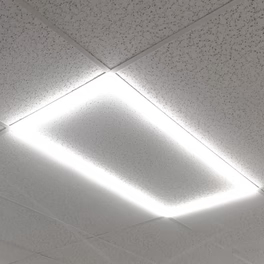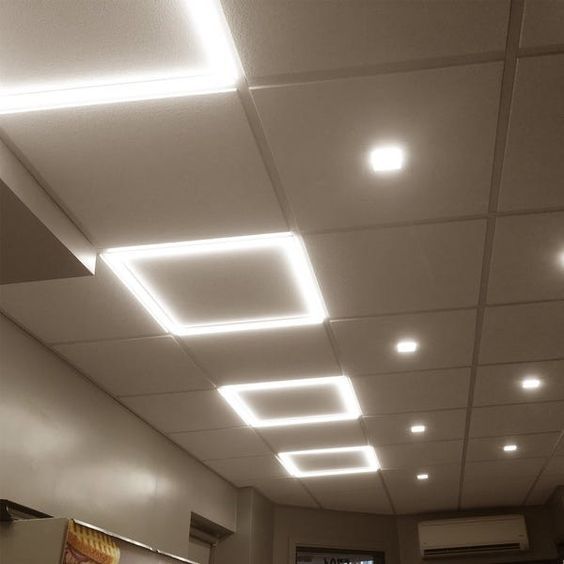In recent years, lighting technology has seen a major transformation. Among the innovations that have stood out, 12 Volt LED ceiling light have become increasingly popular for various applications, especially in homes, RVs, boats, and off-grid systems. These lights offer an efficient and long-lasting solution to your lighting needs, offering the perfect balance of energy savings, brightness, and design flexibility.

Whether you’re upgrading your home lighting system, working on a DIY project, or looking to enhance the ambiance of your space, 12 Volt LED ceiling lights are an excellent choice. This article delves into the many benefits of these lights, their installation process, and how they compare to traditional lighting options. We’ll also highlight some of the best options on the market today.
What Are 12 Volt LED Ceiling Lights?
12 Volt LED ceiling lights are energy-efficient lighting fixtures powered by a 12-volt electrical system. Unlike traditional incandescent or fluorescent lights, LED lights utilize light-emitting diodes (LEDs) to produce light, making them highly efficient and long-lasting. These lights are particularly popular in environments where electricity usage is a concern, such as RVs, campers, boats, and homes with off-grid solar power systems.
The 12-volt power supply is crucial because it allows these lights to be used in systems that do not rely on standard 120V electrical outlets. It also makes them perfect for low-power environments and systems that require minimal energy consumption.
Benefits of 12 Volt LED Ceiling Lights
There are many reasons why 12 Volt LED ceiling lights are an excellent choice for various applications. Below are some of the key advantages of these lights:
1. Energy Efficiency
One of the biggest benefits of 12 Volt LED ceiling lights is their energy efficiency. LED technology uses significantly less power than traditional incandescent or halogen bulbs. In fact, LEDs can use up to 80% less energy than conventional lighting, making them the go-to choice for energy-conscious consumers. Whether you’re outfitting an RV, camper, or simply looking to save on electricity bills, 12 Volt LED ceiling lights are a smart and sustainable choice.
Read too: Discovering the Charm of Nautical Outdoor Ceiling Fans for Your Coastal Retreat: Sail into Style
2. Long Lifespan
LEDs are known for their longevity. Unlike traditional bulbs that may burn out after a few months or years, 12 Volt LED ceiling lights can last up to 50,000 hours or more, depending on the quality and usage. This means fewer bulb replacements and reduced waste, making LEDs both cost-effective and environmentally friendly in the long term.
3. Compact and Versatile Design
12 Volt LED ceiling lights come in a wide variety of designs, from small recessed lights to larger, more decorative fixtures. Whether you’re looking for a sleek, modern look for a bedroom or something more functional for your RV or boat, you’ll find a wide range of options to suit your style and lighting needs.
They’re also ideal for tight spaces due to their small size. The compact nature of 12 Volt LED ceiling lights makes them perfect for installation in low-clearance areas or in locations with limited ceiling space.
4. Low Heat Output
Unlike incandescent or halogen bulbs that generate a significant amount of heat, 12 Volt LED ceiling lights produce minimal heat. This makes them safer and more comfortable to use, particularly in enclosed spaces like RVs and boats. Reduced heat output also means less strain on your cooling systems, whether it’s an air conditioner or a natural ventilation system.
5. Durability and Safety
LEDs are solid-state lights, meaning they have no fragile filament that can break. 12 Volt LED ceiling lights are built to withstand bumps, vibrations, and shocks, making them ideal for environments where movement and jostling are common, such as in RVs and boats. Their sturdy construction also reduces the risk of electrical hazards, such as short circuits and overheating.
6. Improved Lighting Quality
12 Volt LED ceiling lights offer superior lighting quality compared to traditional bulbs. They provide bright, even illumination without the harshness or flickering often associated with fluorescent lights. The light emitted by LEDs is also available in a wide range of colors and temperatures, from warm yellow tones to bright white lights, allowing you to customize the lighting to your preference and space needs.
Applications of 12 Volt LED Ceiling Lights
Given their energy efficiency, versatility, and long lifespan, 12 Volt LED ceiling lights are suitable for a variety of applications. Here are some of the most common uses:
1. RVs and Campers
When it comes to lighting in RVs and campers, 12 Volt LED ceiling lights are the perfect solution. Since these vehicles rely on a 12-volt electrical system, using 12 Volt LED lights allows for energy-efficient lighting that won’t quickly drain your battery. Whether you’re traveling on the road or parked at a campsite, these lights will provide reliable illumination without using excessive power.
2. Boats and Yachts
Similar to RVs, boats and yachts rely on a 12-volt electrical system, making 12 Volt LED ceiling lights an ideal choice for marine environments. LEDs are designed to withstand humidity and saltwater exposure, ensuring long-lasting performance in harsh conditions.
3. Off-Grid Homes and Cabins
For homeowners with off-grid solar systems, 12 Volt LED ceiling lights are an essential part of their energy-efficient setup. Since these homes are powered by solar panels and batteries, choosing low-power lighting options like 12 Volt LED lights helps conserve energy and extend the lifespan of the battery bank.
4. Emergency Lighting
Because 12 Volt LED ceiling lights are energy-efficient and have long lifespans, they are often used as emergency lights in situations where power outages are common. Whether it’s in a basement, garage, or emergency shelter, 12 Volt LED ceiling lights can offer reliable lighting when the power goes out.
Installation Tips
Installing 12 Volt LED ceiling lights is relatively simple and can be done by most homeowners or DIY enthusiasts with basic electrical knowledge. Here’s a general guide to help you install your new lights:
Step 1: Choose the Right Location
Before installing the lights, determine where you want them placed. Consider factors like the size of the room, the desired light output, and any obstructions that may block the light.
Step 2: Turn Off Power
Always ensure that the power is turned off before beginning any electrical work. If you’re installing 12 Volt LED ceiling lights in a new setup, make sure the 12-volt power supply is correctly wired and functioning.
Step 3: Mount the Light Fixtures
Mount the LED light fixtures on the ceiling according to the manufacturer’s instructions. For recessed lighting, you may need to cut holes in the ceiling to fit the fixtures. For surface-mounted lights, simply use screws or adhesive to attach them to the ceiling.
Step 4: Connect the Wires
Connect the wires from the light fixture to the 12-volt power supply. Most LED lights come with clear instructions for wiring. Be sure to follow these instructions carefully to avoid any wiring mistakes. Use wire nuts to secure the connections, and make sure no exposed wires are left open.
Step 5: Test the Lights
Once everything is installed and connected, turn the power back on and test the lights to ensure they are working properly.
Conclusion
12 Volt LED ceiling light offer an energy-efficient, durable, and versatile lighting solution for a wide range of applications. Whether you’re looking to upgrade your home lighting, outfit your RV, or enhance the ambiance of your boat, 12 Volt LED ceiling lights provide superior lighting performance while saving energy and reducing maintenance costs.
With their long lifespan, low heat output, and easy installation, 12 Volt LED ceiling lights are the ideal lighting choice for modern, energy-conscious consumers. Embrace the future of lighting by incorporating these lights into your home or vehicle, and enjoy the long-lasting benefits they bring.











